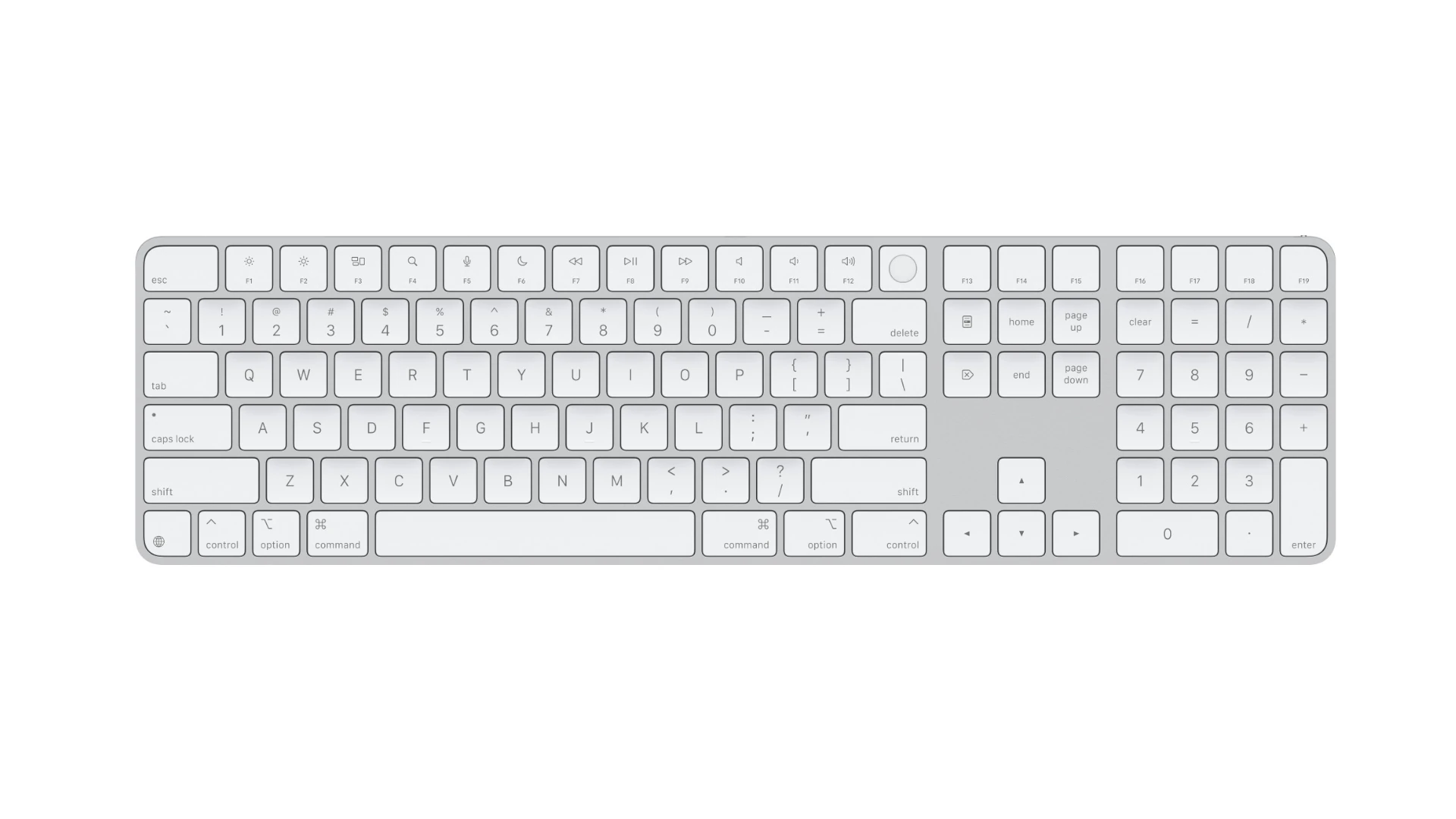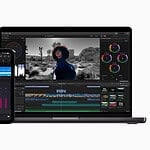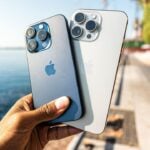Pairing your Magic Keyboard is a breeze when you know the right steps. Apple’s wireless keyboard connects seamlessly to your devices through Bluetooth. To put your Magic Keyboard in pairing mode, simply turn it on and it will enter discovery mode automatically.
If you’re having trouble connecting, try turning the keyboard off and on again. This often resets the pairing process. For older models, you may need to press and hold the power button for a few seconds to initiate pairing mode.
Once in pairing mode, your Mac or iPad should detect the keyboard. Select it from the list of available devices to complete the connection. If issues persist, check your device’s Bluetooth settings or consult Apple’s support resources for troubleshooting tips.
| Device | Pairing Method |
|---|---|
| Mac | System Preferences > Bluetooth |
| iPad | Settings > Bluetooth |
| iPhone | Settings > Bluetooth |
Magic Keyboard Pairing Setup Guide
This guide will walk you through the process of pairing your Magic Keyboard with your compatible device. The process may vary slightly depending on the device you are using, but the general steps remain the same.
What you’ll need:
- Your Magic Keyboard
- Your compatible device (iPad, iPhone, Mac, etc.) – Make sure it’s running the latest compatible operating system.
- Your device’s Bluetooth enabled.
Pairing Instructions:
1. Turn on your Magic Keyboard: The Magic Keyboard typically turns on automatically when you attach it to your iPad or unfold it (depending on the model). If it has a power switch, make sure it’s in the “on” position. Some older models might require you to press the power button.
2. Enable Bluetooth on your Device:
- iPad/iPhone: Go to Settings > Bluetooth. Toggle Bluetooth to the “on” position.
- Mac: Click the Apple menu in the top-left corner of your screen, then select System Preferences (or System Settings on newer macOS versions). Click Bluetooth. Make sure Bluetooth is turned on.
3. Put your Magic Keyboard in Pairing Mode (if necessary): Most newer Magic Keyboards don’t require a separate pairing mode. However, some older models may have a small button to initiate pairing. If you’re having trouble, consult your keyboard’s documentation to see if it needs to be put into pairing mode. If it does, the button is usually small and located on the back or bottom of the keyboard.
4. Select your Magic Keyboard from the list of devices: On your iPad, iPhone, or Mac, you should see your Magic Keyboard appear in the list of available Bluetooth devices. It might be listed as “Magic Keyboard” or something similar.
5. Enter the pairing code (if prompted): In some cases, you might be asked to enter a pairing code on your keyboard. This code will be displayed on your device’s screen. Type the code on your Magic Keyboard and press Enter or Return.
6. Confirmation: Once the pairing is successful, your device will indicate that the Magic Keyboard is connected. You should now be able to use your keyboard.
Troubleshooting:
- Keyboard not showing up: Make sure Bluetooth is enabled on your device and that your keyboard is turned on. If your keyboard has a pairing button, make sure you’ve pressed it. Try turning Bluetooth off and on again on your device.
- Connection issues: If your keyboard connects but then disconnects frequently, try moving closer to your device. Interference from other Bluetooth devices can also cause problems. Try restarting both your keyboard (if possible) and your device.
- Still having problems? Consult Apple’s support website or contact Apple Support for further assistance. They can provide specific troubleshooting steps for your particular keyboard and device.
Note: These instructions are general. Always refer to the specific instructions that came with your Magic Keyboard for the most accurate and up-to-date information.
Setting Up Your Magic Keyboard
Setting up your Magic Keyboard is straightforward. You’ll need to unbox it, turn on pairing mode, connect to your device, and troubleshoot any issues that arise. Let’s go through each step to get you typing in no time.
Unboxing and Initial Impressions
Your Magic Keyboard comes in a sleek white box. Open it carefully to find the keyboard, a USB-C to Lightning cable, and a quick start guide. The keyboard has a slim aluminum body with low-profile keys. It’s lightweight yet sturdy.
Take a moment to appreciate the build quality. The keys have a satisfying click when pressed. You’ll notice the function keys at the top for quick access to common controls.
If you have the Magic Keyboard with Touch ID, you’ll see the fingerprint sensor in the top right corner. This model is compatible with M1 Macs and later.
Turning on Pairing Mode
To start using your Magic Keyboard, you need to activate pairing mode. Here’s how:
- Ensure the keyboard is charged or connected via the USB-C cable
- Locate the power switch on the back edge of the keyboard
- Slide the switch to the ON position
- The green LED will light up briefly
The keyboard is now in pairing mode and ready to connect to your device. It will remain discoverable for several minutes.
If you’re having trouble, try turning the keyboard off and on again. This often forces it into pairing mode.
Connecting to a Mac or iOS Device
Connecting your Magic Keyboard is easy. For Macs:
- Click the Apple menu and open System Preferences
- Select Bluetooth
- Your keyboard should appear in the device list
- Click “Connect” next to the keyboard name
For iPads and iPhones:
- Go to Settings > Bluetooth
- Make sure Bluetooth is turned on
- Tap your Magic Keyboard when it appears under “Other Devices”
Your keyboard will pair automatically if it’s connected via USB cable. You can then unplug it for wireless use.
Troubleshooting Common Pairing Issues
If you’re having trouble connecting your Magic Keyboard, try these steps:
- Ensure the keyboard is charged and turned on
- Restart your Mac or iOS device
- Toggle Bluetooth off and on in your device settings
- Move the keyboard closer to your device
If problems persist:
- Remove the keyboard from your Bluetooth devices and try pairing again
- Update your device’s operating system
- Reset the keyboard by turning it off and holding the power button for 5 seconds
For persistent issues, contact Apple Support or visit an Apple Store for assistance.
| Issue | Solution |
|---|---|
| Won’t pair | Restart devices, toggle Bluetooth |
| Keeps disconnecting | Check battery, update OS |
| Keys not responding | Clean keyboard, check for software conflicts |
| Touch ID not working | Ensure compatibility, set up in System Preferences |
Remember, a stable Bluetooth connection is key to a smooth typing experience.
Enhancing Your Typing Experience
The Magic Keyboard offers several ways to improve your typing efficiency and comfort. You can adjust settings, use trackpad gestures, and learn helpful shortcuts to boost productivity.
Adjusting Keyboard Settings
You can customize keyboard settings to suit your preferences. Open System Preferences and select Keyboard. Here you’ll find options to adjust key repeat rate and delay. This lets you fine-tune how quickly keys register when held down.
For numeric data entry, enable the numeric keypad if your Magic Keyboard includes one. This speeds up number input significantly.
Consider adjusting backlighting levels for comfort in different lighting conditions. Brighter settings help in dark rooms, while dimmer levels conserve battery life.
Using the Trackpad and Gestures
The Magic Keyboard’s built-in trackpad supports many useful gestures. Two-finger scrolling lets you navigate documents and webpages smoothly. Pinch to zoom adjusts content size quickly.
Three-finger swipes switch between full-screen apps or spaces. This helps manage multiple windows efficiently.
You can customize trackpad sensitivity and gesture options in System Preferences. Adjust these to match your working style and boost productivity.
Shortcut Keys and Productivity Tips
Learning keyboard shortcuts dramatically speeds up common tasks. Command + W closes the current window or tab. Command + Tab switches between open applications quickly.
For text editing, Command + C (copy), Command + V (paste), and Command + X (cut) are essential. Use Command + Z to undo mistakes rapidly.
Keyboard navigation reduces the need for trackpad use. Tab moves between fields in forms. Arrow keys navigate documents precisely.
| Task | Shortcut |
|---|---|
| Close window | Command + W |
| Switch apps | Command + Tab |
| Copy | Command + C |
| Paste | Command + V |
| Undo | Command + Z |
The Magic Keyboard’s low-profile keys and scissor mechanism provide a comfortable typing experience. This design reduces finger fatigue during long typing sessions.
Maintaining and Troubleshooting Your Keyboard
Proper care and maintenance of your Magic Keyboard ensures optimal performance and longevity. Regular cleaning, charging, and troubleshooting can address most common issues.
Charging and Battery Life Considerations
Your Magic Keyboard’s rechargeable battery requires periodic charging for uninterrupted use. Connect the keyboard to your Mac using a USB-C to Lightning Cable or Lightning to USB Cable to charge. The battery typically lasts several weeks on a single charge with normal use.
To check battery status, go to Bluetooth settings on your Mac. A low battery indicator will appear when charging is needed. For optimal battery life:
- Turn off the keyboard when not in use
- Avoid extreme temperatures
- Perform a full charge cycle monthly
| Charging Method | Estimated Charging Time |
|---|---|
| USB-C to Lightning | 2 hours |
| Lightning to USB | 3 hours |
Cleaning and Caring for Your Keyboard
Regular cleaning keeps your Magic Keyboard in top condition. Follow these steps:
- Power off the keyboard
- Use a soft, lint-free cloth slightly dampened with water
- Gently wipe the keys and surfaces
- Dry thoroughly with a clean cloth
Avoid liquid cleaners or abrasive materials. For stubborn dirt, use a small amount of isopropyl alcohol on the cloth. Never spray liquids directly onto the keyboard.
Protect your keyboard from:
- Spills
- Dust accumulation
- Direct sunlight
- Extreme temperatures
Resolving Connectivity Issues
If your Magic Keyboard won’t connect, try these steps:
- Ensure the keyboard is charged and turned on
- Check Bluetooth is enabled on your Mac
- Bring your keyboard into pairing mode by pressing and holding the power button
If issues persist:
- Go to Bluetooth settings on your Mac
- Select your keyboard
- Click “Forget This Device”
- Restart your Mac
- Attempt to pair the keyboard again
For persistent problems, try resetting the keyboard. Press Command + W to force pairing mode. If unsuccessful, contact Apple Support for further assistance.
Advanced Features and Compatibility
The Magic Keyboard offers a range of advanced features and compatibility options across Apple’s ecosystem. It integrates seamlessly with various devices and provides unique functions depending on the model.
Magic Keyboard Models and Unique Functions
The Magic Keyboard comes in several variants, each with distinct features. The Magic Keyboard for iPad includes a built-in trackpad, enhancing navigation on iPadOS. It supports iPad Pro and iPad Air models, offering a laptop-like experience.
Some Magic Keyboard models feature Touch ID for secure authentication. This is particularly useful for Macs without built-in Touch ID. The keyboard’s function keys provide quick access to system controls and app-specific shortcuts.
Magic Keyboards use Bluetooth for wireless connectivity. They pair easily with compatible devices and maintain a stable connection. The keyboard’s scissor mechanism ensures a comfortable and quiet typing experience.
Integrating with Different Apple Devices
You can use your Magic Keyboard with various Apple devices. It works with Macs, iPads, and even iPhones. The pairing process is straightforward across devices.
For Macs, you can connect the Magic Keyboard using a Lightning cable. This automatically pairs the keyboard. For wireless pairing, turn on Bluetooth on your Mac and set the keyboard to discoverable mode.
With iPads, the Magic Keyboard attaches magnetically and connects instantly. No manual pairing is needed. You can adjust trackpad settings and keyboard brightness in the iPad’s Settings app.
Magic Keyboard as a Part of the Apple Ecosystem
The Magic Keyboard integrates deeply with Apple’s ecosystem. It works seamlessly with macOS, iPadOS, and iOS, offering a consistent typing experience across devices.
Key features include:
- Automatic switching between devices
- Support for Mac-specific function keys
- Integration with Apple’s accessibility features
The keyboard’s design complements other Apple products. Its aluminum build matches the aesthetic of Macs and iPads. This cohesive design creates a unified workspace.
Software updates often bring new features to the Magic Keyboard. These updates can improve compatibility, add new functions, or enhance existing ones. Keep your devices updated to benefit from the latest improvements.
Frequently Asked Questions
Magic Keyboard pairing can sometimes be tricky. These questions cover common issues users face when connecting their keyboards to various devices.
How can I put my Magic Keyboard into Discoverable mode for pairing?
To put your Magic Keyboard into Discoverable mode, turn it on using the switch on the back. The green indicator should be visible. Press and hold the power button for 3 seconds until the LED light starts blinking. Your keyboard is now ready to pair.
What steps should I follow to pair my Magic Keyboard with an iPad?
Turn on Bluetooth on your iPad in Settings. Make sure your Magic Keyboard is in Discoverable mode. On your iPad, tap the keyboard name when it appears in the list of available devices. Follow any on-screen prompts to complete the pairing process.
What is the procedure for connecting a Magic Keyboard to a Windows computer?
Enable Bluetooth on your Windows PC. Put the Magic Keyboard in Discoverable mode. Open Bluetooth settings on your computer and select “Add a device.” Choose the Magic Keyboard from the list of available devices. Follow the on-screen instructions to finish pairing.
Can the Magic Keyboard be paired with an iPhone, and if so, how?
Yes, you can pair a Magic Keyboard with an iPhone. Turn on Bluetooth in your iPhone’s Settings. Put the keyboard in Discoverable mode. On your iPhone, tap the keyboard name when it appears in the list of available devices. Complete the pairing by following any additional prompts.
How do I troubleshoot an Apple Wireless Keyboard that won’t connect?
First, ensure the keyboard has charged batteries. Turn the keyboard off and on again. Try re-pairing by pressing CMD+W to force pairing mode. If issues persist, reset your device’s Bluetooth settings and attempt to pair again.
What are the instructions for pairing a Magic Keyboard 2 with a Mac?
To pair a Magic Keyboard 2 with a Mac, use the Lightning to USB cable provided. Plug the Lightning end into the keyboard and the USB end into your Mac. Turn on the keyboard. It should pair automatically with your Mac.
| Device | Pairing Method |
|---|---|
| Mac | USB cable or Bluetooth |
| iPad | Bluetooth |
| iPhone | Bluetooth |
| Windows | Bluetooth |







